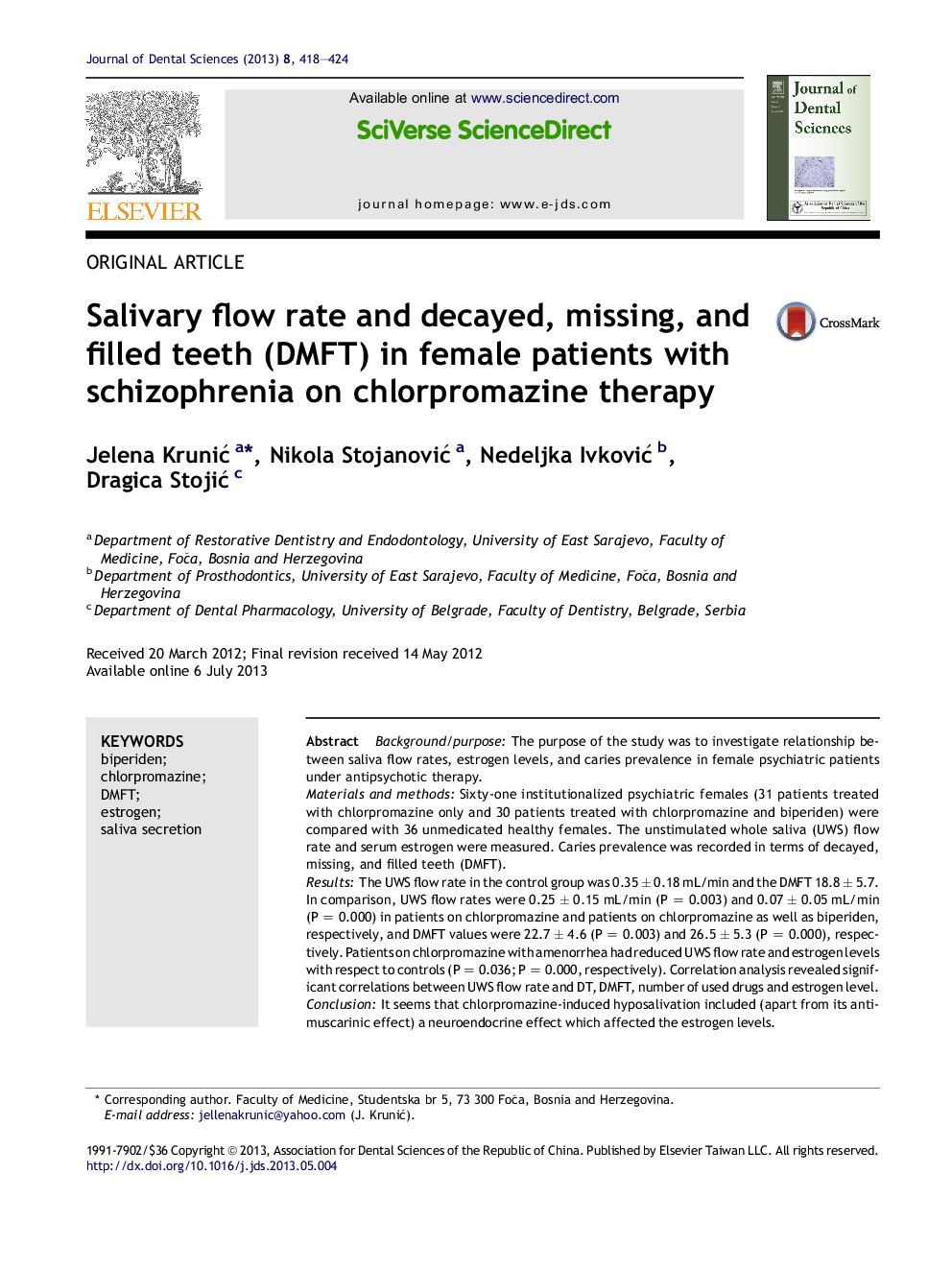| Article ID | Journal | Published Year | Pages | File Type |
|---|---|---|---|---|
| 3144605 | Journal of Dental Sciences | 2013 | 7 Pages |
Background/purposeThe purpose of the study was to investigate relationship between saliva flow rates, estrogen levels, and caries prevalence in female psychiatric patients under antipsychotic therapy.Materials and methodsSixty-one institutionalized psychiatric females (31 patients treated with chlorpromazine only and 30 patients treated with chlorpromazine and biperiden) were compared with 36 unmedicated healthy females. The unstimulated whole saliva (UWS) flow rate and serum estrogen were measured. Caries prevalence was recorded in terms of decayed, missing, and filled teeth (DMFT).ResultsThe UWS flow rate in the control group was 0.35 ± 0.18 mL/min and the DMFT 18.8 ± 5.7. In comparison, UWS flow rates were 0.25 ± 0.15 mL/min (P = 0.003) and 0.07 ± 0.05 mL/min (P = 0.000) in patients on chlorpromazine and patients on chlorpromazine as well as biperiden, respectively, and DMFT values were 22.7 ± 4.6 (P = 0.003) and 26.5 ± 5.3 (P = 0.000), respectively. Patients on chlorpromazine with amenorrhea had reduced UWS flow rate and estrogen levels with respect to controls (P = 0.036; P = 0.000, respectively). Correlation analysis revealed significant correlations between UWS flow rate and DT, DMFT, number of used drugs and estrogen level.ConclusionIt seems that chlorpromazine-induced hyposalivation included (apart from its antimuscarinic effect) a neuroendocrine effect which affected the estrogen levels.
